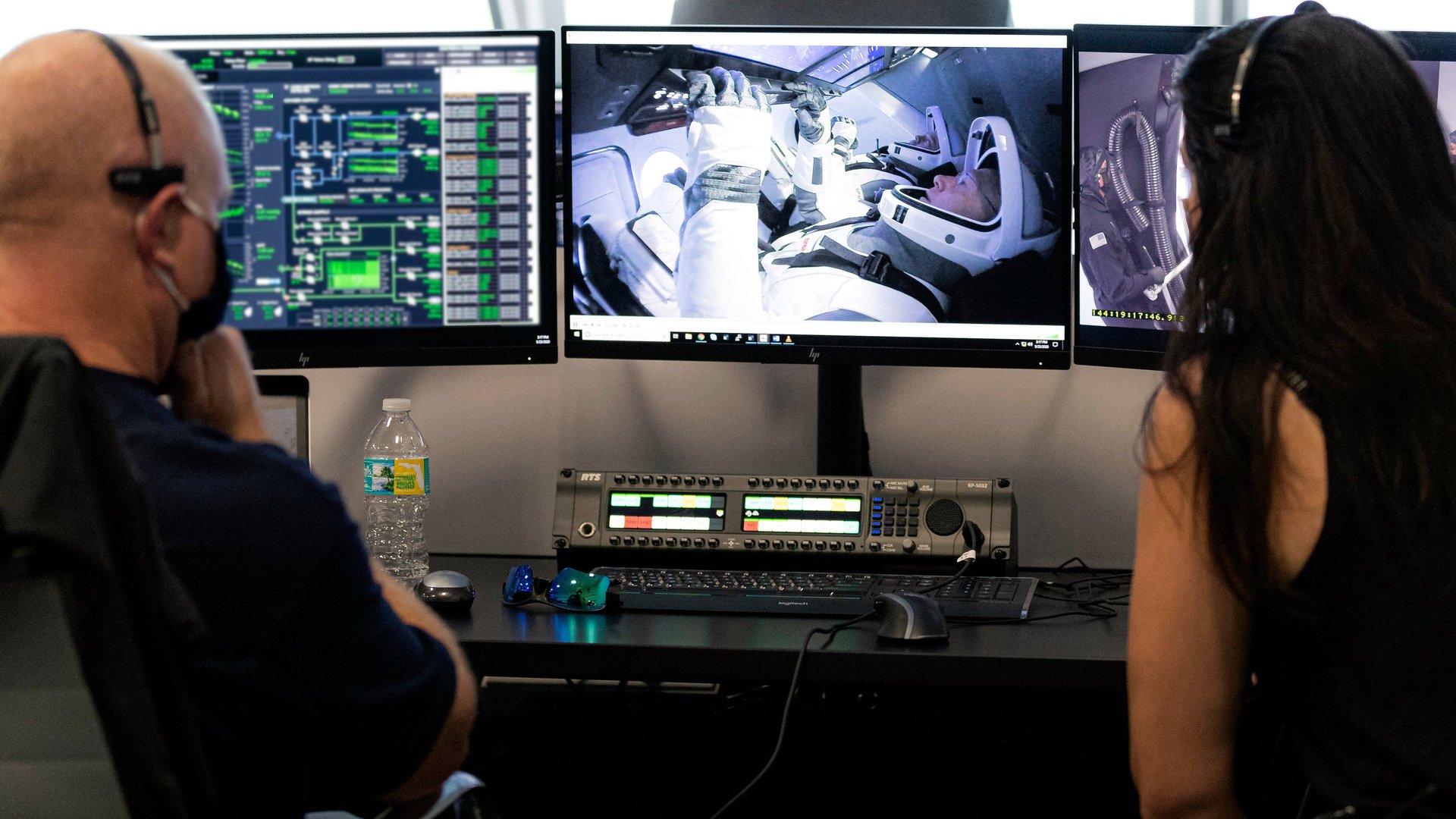Elon Musk’s SpaceX has put two people in orbit
Astronauts launched to orbit from the United States for the first time since 2011 today, as SpaceX began a crewed test flight of its Dragon spacecraft, which is expected to dock with the International Space Station (ISS) on Sunday morning.


Astronauts launched to orbit from the United States for the first time since 2011 today, as SpaceX began a crewed test flight of its Dragon spacecraft, which is expected to dock with the International Space Station (ISS) on Sunday morning.
“Thanks for flying with Falcon 9 today,” SpaceX’s flight chief engineer radioed the two NASA astronauts a dozen minutes into the flight, after the Dragon had separated from the rocket that carried it out of the atmosphere. It marks the first time a private company has flown people into orbit.
With privately-led spaceflight, NASA will once again be able to send astronauts to low-earth orbit, expanding its scientific research and preparations for missions to the Moon or Mars. Today’s launch is also a crucial step toward a new orbital economy, which SpaceX founder Elon Musk believes will have the same impact as the internet.
Astronauts Doug Hurley and Bob Behnken, former military test pilots, will start by demonstrating their ability to manually maneuver the typically autonomous vehicle in orbit. Then they’ll catch up on their sleep during the 19-hour voyage up to the ISS, before carefully docking with the space station. The astronauts will spend at least several days on at the orbiting lab, joining one US colleague and two Russian cosmonauts already onboard.
The launch is the culmination of more than a decade of effort by NASA to replace the retired Space Shuttle with two privately designed and operated space capsules. SpaceX and Boeing were chosen in 2014 to develop these vehicles, and despite delays, are on track to produce the least expensive human-carrying spacecraft ever. Boeing is expected to re-fly a critical test flight of its vehicle, Starliner, later this year.
SpaceX’s test flight won’t be over until the astronauts safely return to earth, and truly proving the Dragon is a safe and reliable transportation system will take multiple flights. But under SpaceX’s agreement with NASA, it can now use its vehicle to fly private missions, at a cost of around $60 million per person. Potential passengers might be astronauts from wealthy countries with new space programs, like the UAE; wealthy individuals, like the trip SpaceX already has under contract with the space tourism firm Axiom; or workers manufacturing unique goods in microgravity.
In the near-term, the most important source of revenue for the new business will still be the US government. But a the private sector’s new experiment in space could yield surprising results.
“It’s a completely new category, an organization now has independent access to send humans into space,” Casey Dreier, a policy analyst at the Planetary Society, told Quartz. “That’s new. It’s really hard to draw historical analogs to that. We’re creating a completely new and unpredictable dynamic by having this capability in the hands of people who are able to play with it, with more freedom and flexibility.”
Musk founded SpaceX in 2002 after discovering how expensive it was to transport anything to space, and becoming convinced could deliver a far cheaper solution. He raised venture funding to build a small rocket to launch satellites, and the company ultimately partnered with NASA to develop the Falcon 9 and an earlier version of the Dragon spacecraft that carried cargo to the ISS.
Now, the company dominates the satellite launch business, and is developing its own space internet network and a next-generation space vehicle called Starship.